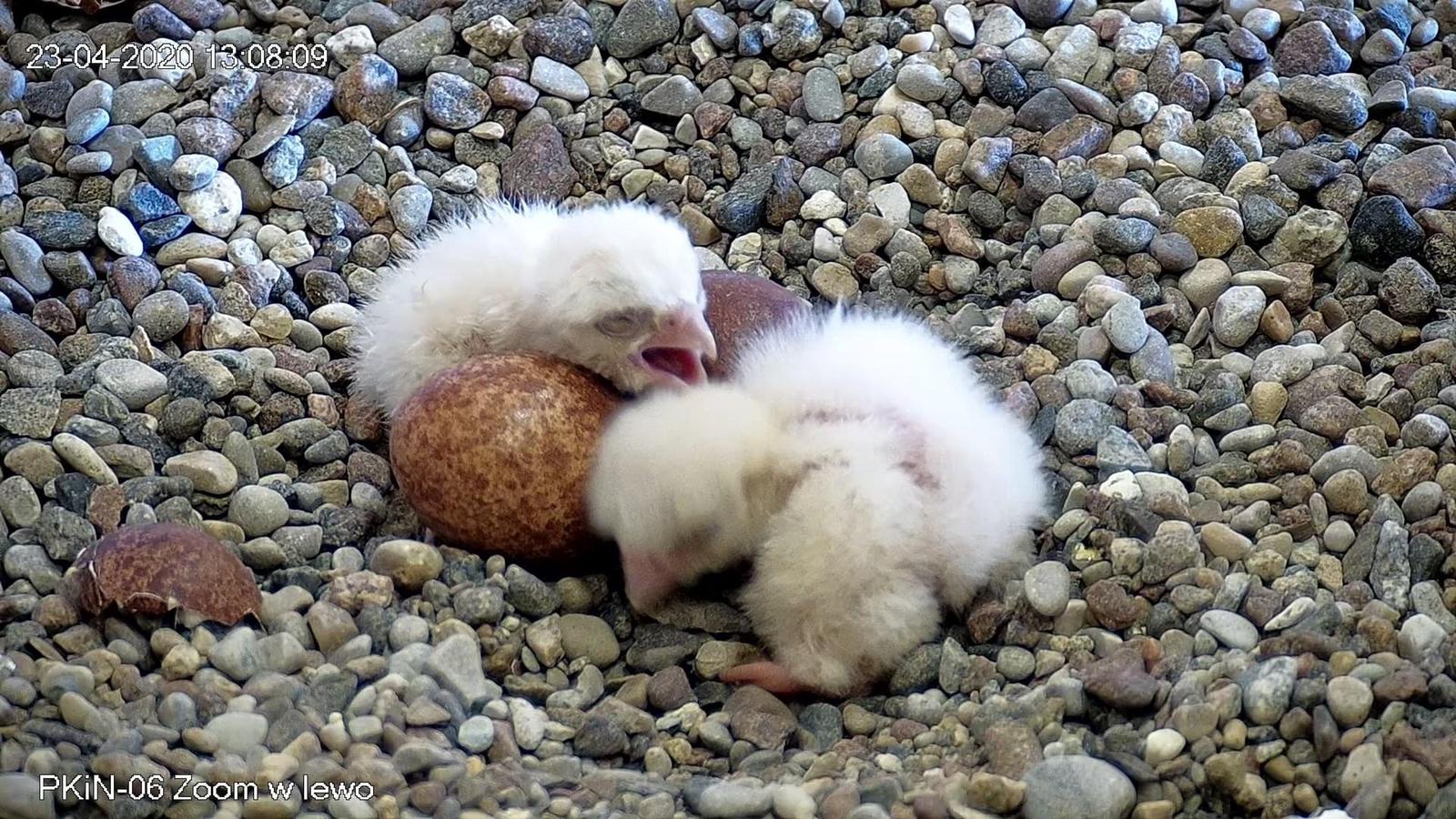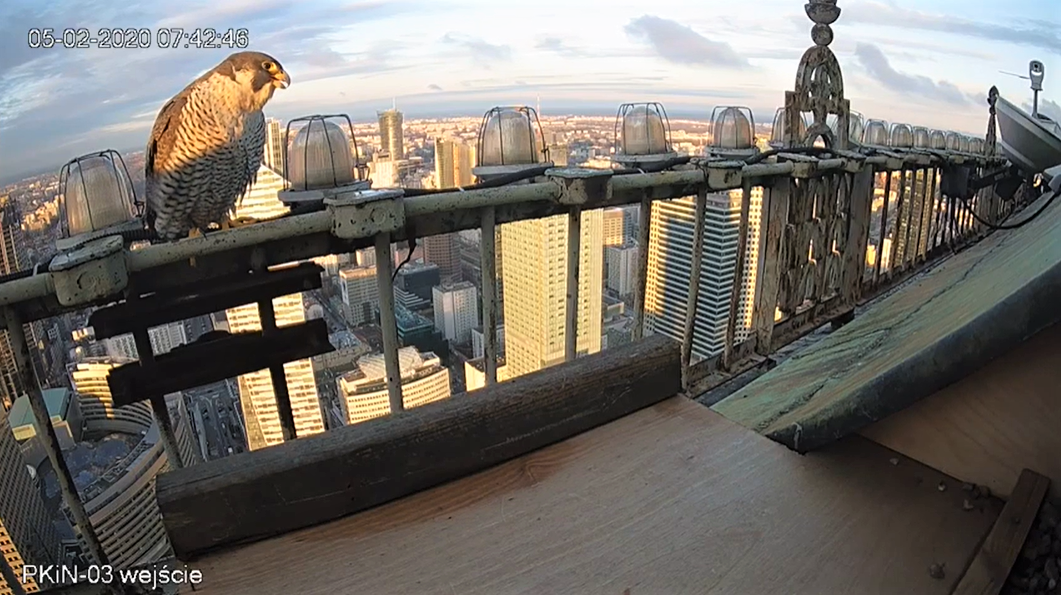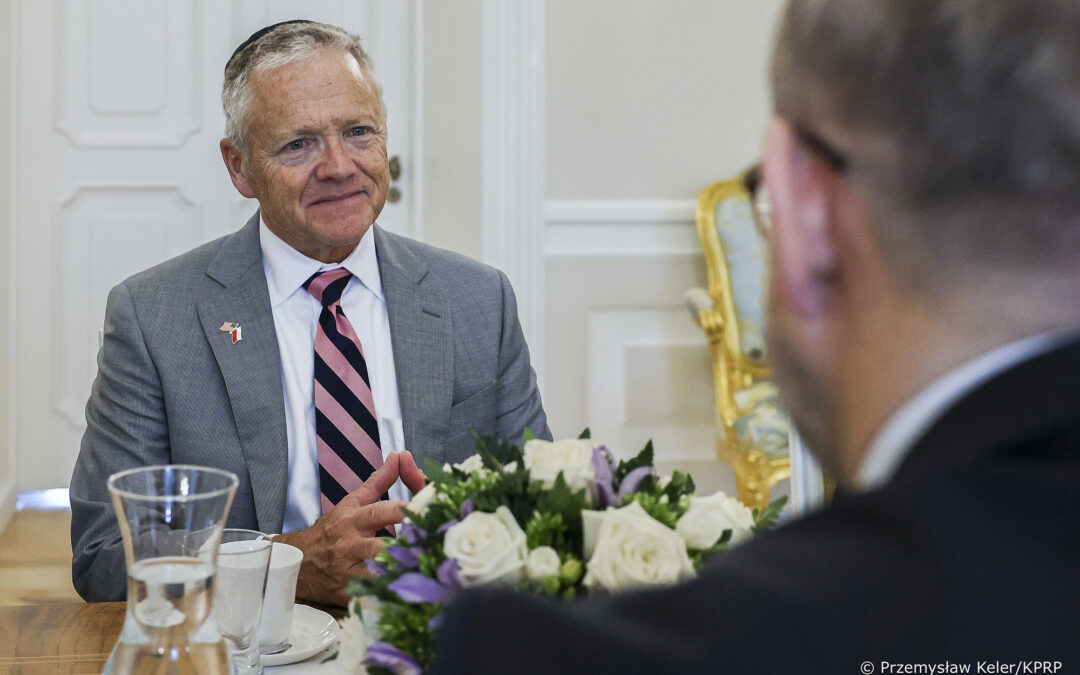Three peregrine falcon chicks have hatched in a nest on the 43rd floor of Warsaw’s iconic Palace of Culture and Science. It is the latest success in a programme to reintroduce the birds, which once suffered man-made extinction in Poland.
The chicks are the offspring of falcons Giga and Franek, who have been living at the top of the communist-era skyscraper, Poland’s tallest building, on and off since 2016. Bred by falconers, Franek had previously lived in a nest elsewhere in the city before settling in the Palace of Culture and Science.
Several wild females in Warsaw flew to the nest to compete to be his partner, but he was eventually joined by Giga, according to Gazeta Wyborcza.

Peregrine falcons became extinct in Poland in the 1960s due to the use of insecticides. They were later gradually reintroduced into the country from falconer-bred birds.
“Peregrines which are planned for reintroduction are reared by their parents and do not know people,” explains Janusz Sielicki, from the Sokół (Falcon) Society for Wild Animals, which looks after the nest.
“Reintroductions are conducted mainly in forests, to re-establish a tree-nesting population. In 1999, for the first time in 30 years, peregrines started to nest in Warsaw, on the Palace of Culture and Science.”
The palace is an iconic feature of Warsaw’s skyline. It was built in the 1950s as a “gift” from the Soviet Union to Poland, which had fallen under Moscow’s control following the war. The architect, Lev Rudnev, was also responsible for the similar “Seven Sisters” skyscrapers built in Moscow under Stalin.
One of the best perspectives with the iconic view of the Palace of Culture and Science along Brokla Street.☀️#Warsaw #DiscoverWarsaw #PalaceOfCultureAndScience pic.twitter.com/WumBZ8lP9b
— Go2Warsaw (@Go2Warsaw) March 19, 2020
The first two falcons settled in the building after an artificial nest was installed there. They were named Wars and Sawa in a competition to celebrate the launch of the first online video footage of their nest in 2009, and lived until 2015.
Giga and Franek settled in the nest the following year, but relocated to the Warsaw Trade Tower between 2017 and 2019, when the Palace of Culture and Science spire was being renovated and their nest was dismantled.
After their return to the building, the first of their eggs this year was seen in March, with three others appearing in the following weeks. Over the last week, ornithologists have been watching the live feed of the nest – provided by seven cameras which were installed during the renovation of the spire – as the expected hatching date approached.
After the first chick was born, the Sokół Society page described it as “strong and very energetic”. Peregrine falcon chicks will learn to fly after five or six weeks, and gradually become confident enough to leave the nest, according to Noizz.
Most of the peregrine population in Poland live in artificial nests provided by the Sokół Society, 30 of which are established on man-made constructions, with a further 40 built in natural environments.
Sielicki says these provide “security for eggs and chicks”. The nests are only used in the breeding and post-fledging season, after which the society cleans and disinfects the nests before the birds return to the same territory again.
According to Sielicki, cities provide ideal conditions for peregrines, who feed mainly on birds they catch in flight.
“Our cities are full of birds, so they have a lot of potential food,” he says. “High buildings are, for them, just like mountains, with plenty of shelves, very often with gravel on them as well.”
There are fewer dangers for peregrines in cities, he adds, which include the risk of losing chicks to predators like eagle owls.
Warszawa PKiN – dumna mama Giga pokazuje w całej okazałości swojego pierwszego i wyczekiwanego przez obserwatorów 🐥 Maluch jak widać jest silny i bardzo energiczny 😃 Czekamy na następne 😉 Podglądajcie online pałacową parę i małe sokoły 🙂#ZostańwDomu #peregrinuspl #StayHome Pałac Kultury i Nauki Warszawa http://webcam.peregrinus.pl/pl/warszawa-pkin-podglad-z-warszawy
Opublikowany przez Stowarzyszenie Na Rzecz Dzikich Zwierząt Sokół Czwartek, 23 kwietnia 2020
The society have also fitted 16 of their other nests with webcams, including two in trees, which Sielicki says are the only tree-based webcams for peregrine falcons in the world.
“The main principle of watching the bird’s life,” he says, “is not to interfere with them.” The only contact the society has with the peregrines after they are released is when they ring the birds, allowing them to monitor their origin.
This means, he adds, that the coronavirus pandemic has had a negligible impact on their work – though the society hopes that life will be back to normal by the next reintroduction season, so that more birds can be released.
Main image credit: YouTube/PKiN live stream

Juliette Bretan is a freelance journalist covering Polish and Eastern European current affairs and culture. Her work has featured on the BBC World Service, and in CityMetric, The Independent, Ozy, New Eastern Europe and Culture.pl.




















